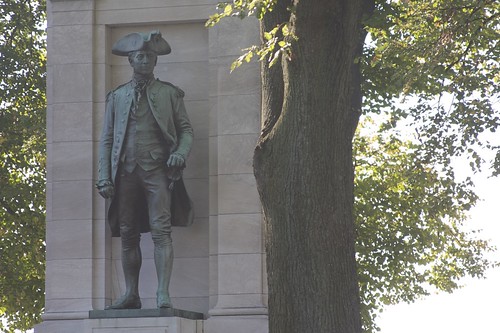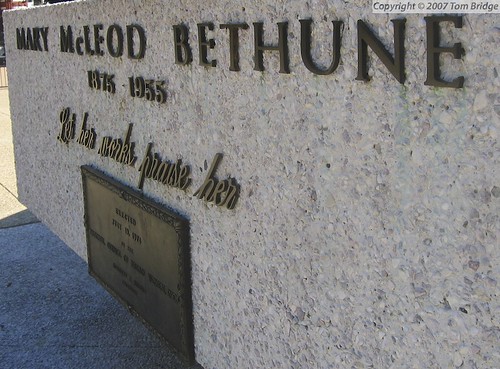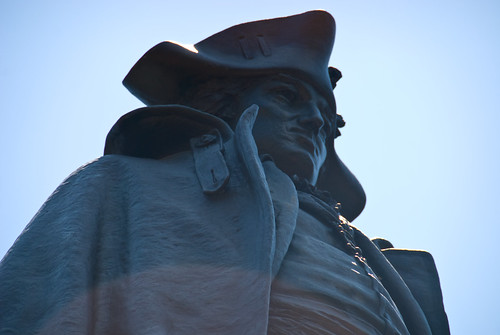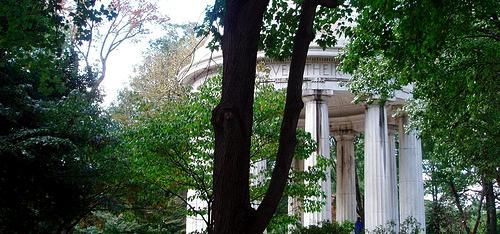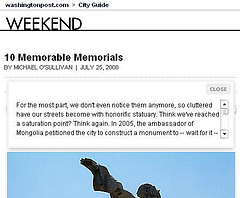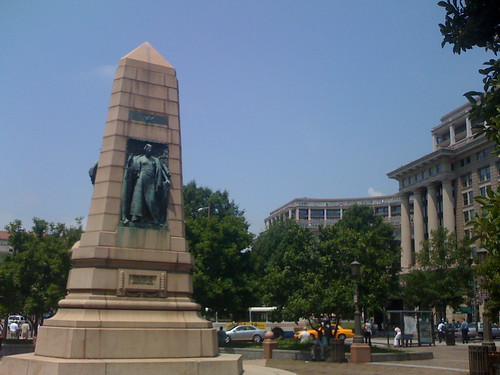Where 17th Street dead-ends in Independence Avenue, just to the south of the World War II Memorial, stands John Paul Jones, atop a Marble Platform. The monument, built in 1912 as the first in Potomac Park, stands as the memorial to our first great Naval hero. While his remains lie in the chapel of the Naval Academy in Annapolis, this memorial to Captain Jones stands looking North toward the White House.
Jones was born John Paul, a Scotsman who emigrated to the Colonies around the start of the Revolutionary War. He served aboard British merchant ships prior to his arrival in the Colonies, and had been master and commander of the brig John, where his troubles began. By the time he arrived in Fredericksburg, he’d had to assume another name, John Paul Jones, to avoid hanging for the murder of two sailors under his command: one through flogging, one through a swordfight over wages.
Continue reading
